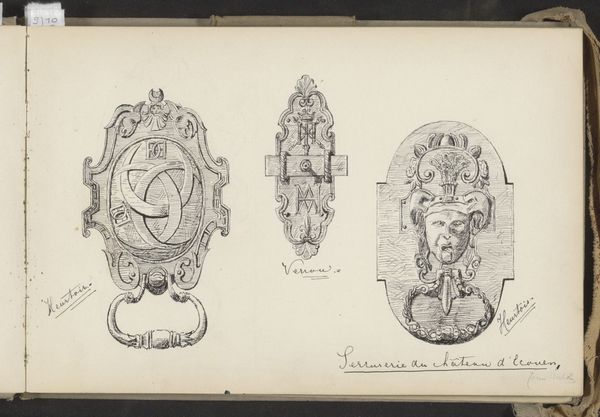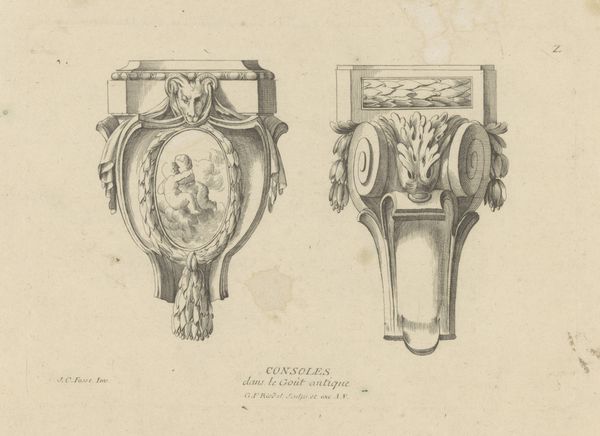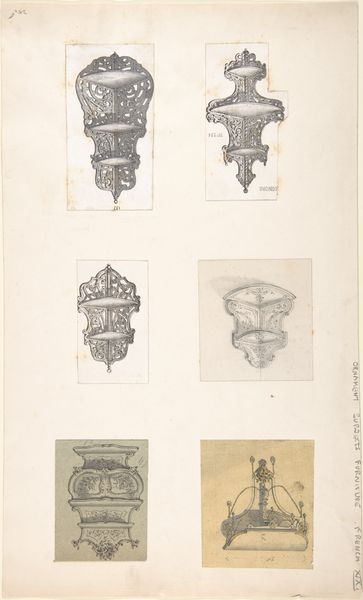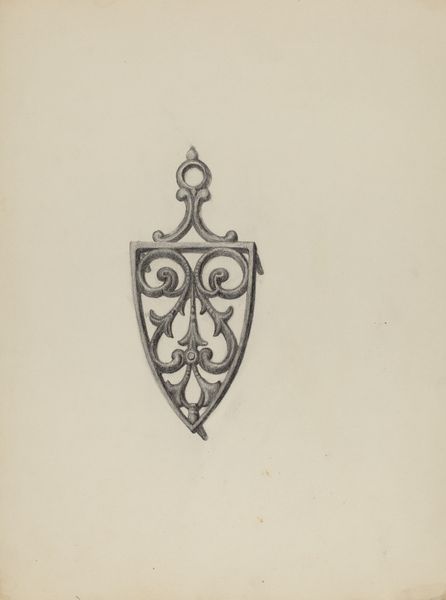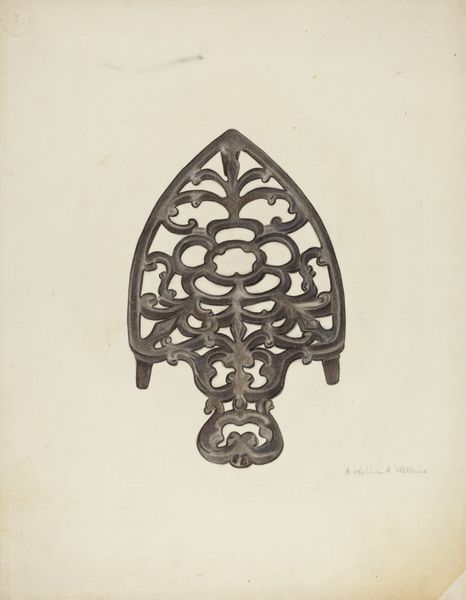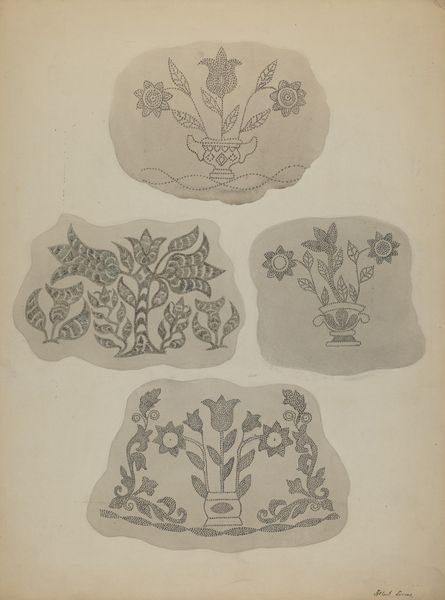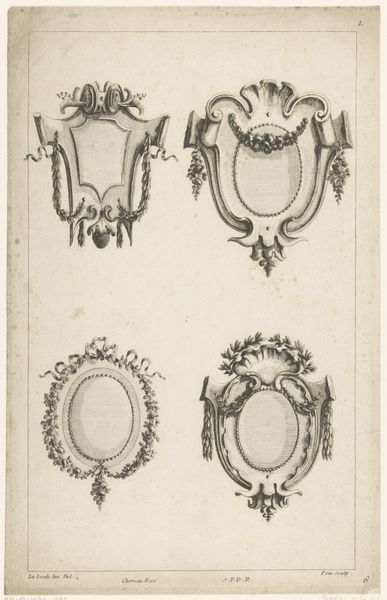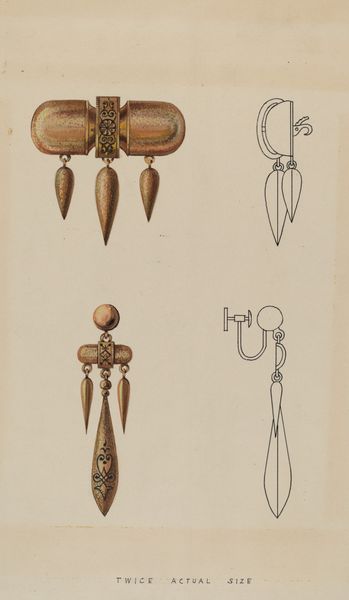
drawing, metal, pencil, graphite, charcoal
#
drawing
#
metal
#
charcoal drawing
#
form
#
pencil drawing
#
pencil
#
line
#
graphite
#
charcoal
#
charcoal
#
graphite
Dimensions: overall: 35.6 x 26.2 cm (14 x 10 5/16 in.)
Copyright: National Gallery of Art: CC0 1.0
Curator: This is "Iron Lock," a drawing rendered around 1937, likely with charcoal, graphite, and pencil. It’s a striking study. Editor: It’s quite interesting! The texture achieved with charcoal gives it a unique metallic luster, but there’s something… foreboding about that central, almost demonic face on the lock. Curator: I agree. Consider the socio-political climate of the late 1930s, with the rise of fascism and global anxieties preceding World War II. A seemingly mundane object like a lock becomes imbued with symbolic weight. What is it protecting, and from whom? Editor: From a formal standpoint, notice how the artist uses the medium to describe light. The rendering showcases multiple views—a frontal, a profile—which emphasizes the lock’s three-dimensional form and intricate design, even in two dimensions. Curator: Exactly! The design of the lock itself is intriguing. Is the face guarding something? Is it representative of the oppressor? The lack of clarity pushes us to consider power dynamics—who holds the keys, both literally and metaphorically? The symbolism connects directly to historical questions of social justice. Editor: The tonal range achieved through blending and contrast allows the metallic qualities of the iron to almost shimmer, highlighting both light and form with a textural subtlety that amplifies the piece's formal depth. It feels tactile, like one could almost reach out and feel the coldness of the metal. Curator: And, considering the date, you wonder about the role of craft during this time. Industrialization certainly, but the persistence of hand-rendered artistic production tells of deeper connections. What socioeconomic factors allowed an artist to choose a subject like this for observation and contemplation? Who was afforded that luxury, that privilege, and under what conditions? Editor: It seems almost like a feat of structural engineering, to so capture the details with simple graphite and charcoal—achieving the dimensionality and, I have to concede, evoking that tension. Curator: Ultimately, this detailed study raises questions of containment and access, both physical and societal. I like how our consideration takes us beyond the lock itself, towards an open dialogue on history, art, and power. Editor: Indeed. For me, the way this artist’s work transforms simple materials like graphite and charcoal into complex textures offers a nuanced meditation on form, space, and volume, and leaves much for the contemporary viewer to discover in the deceptively simple study.
Comments
No comments
Be the first to comment and join the conversation on the ultimate creative platform.
